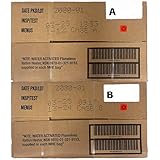Table of Contents
- Family Members
- Pets
- Neighbors
- Vulnerable Community Members
Family Members
When it comes to emergency preparedness, our family should be our top priority. Preparing and planning for an emergency starts at home. In my experience, the first step is to involve every member of the household in the planning process. It’s essential that everyone knows what to do and where to go in case of an emergency. This includes having a designated meeting spot and practicing your emergency plan together.
A crucial aspect of planning is ensuring you have enough supplies for everyone in the family. This involves stockpiling essential items like food, water, medications, and first-aid supplies. Keep in mind the specific needs of each family member, such as prescription medications, dietary restrictions, and age considerations. And don’t forget comfort items for children to help keep them calm.
Communication is key during an emergency. Make sure everyone knows how to contact each other if you get separated. This could include having a printed list of phone numbers and addresses or establishing a group chat. Trust me, being able to quickly connect with your loved ones can make a world of difference when seconds count.
Pets
Our furry friends are family too, and they must be included in your emergency preparedness planning. Just like humans, pets need their own set of supplies. This should include pet food, water, medications, and comfort items such as favorite toys or blankets. Create a pet emergency kit that is easily accessible and portable.
Consider identification and records for your pets. Ensure pets have up-to-date ID tags and microchips with current contact information. It’s also helpful to keep a copy of their veterinary records, including vaccination history, in your emergency kit. These records can be essential if you need to stay in a pet-friendly shelter or if your pet gets lost.
Having a plan for how to transport your pets in an emergency is crucial. Whether you’re evacuating due to a natural disaster or an unexpected event, knowing how to safely and efficiently move your pets can save their lives. Practice getting pets into carriers quickly and keep them accustomed to travel. It’s always better to be prepared than caught off guard.
Neighbors
One of the most valuable resources during an emergency is your neighborhood community. Building relationships and establishing trust with your neighbors can be incredibly beneficial. Share your emergency plans and form a network where everyone looks out for each other, especially during crises.
Collaborate on resources and skills. Some neighbors may have expertise in first aid, know how to operate emergency equipment, or have valuable tools like generators. Pooling resources and skills can make your neighborhood more resilient and effective in dealing with emergencies together.
== > What if ... Get a FREE Subscription to PREPARE
Consider creating a neighborhood communication plan. This could involve a phone tree, group messaging apps, or even walkie-talkies for older communities. Clear and effective communication can help ensure that everyone is informed and ready to take action when needed. It also fosters a sense of solidarity and collective responsibility.
Vulnerable Community Members
In every community, there are vulnerable members who may need extra assistance during an emergency. This includes elderly neighbors, individuals with disabilities, single parents, and those who might not speak the local language. From my years of experience, lending a helping hand can make a significant impact on their safety and well-being.
Reach out beforehand to understand their needs and limitations. This can include helping them prepare their emergency kits or ensuring they have a reliable way to contact someone during an emergency. Being proactive in your approach can alleviate a lot of stress when an actual emergency occurs.
Establish a buddy system. Pair each vulnerable member with someone who can check on them and assist as needed. Ensure the buddy system is well-coordinated and practiced regularly. This not only ensures their safety but also fosters a community spirit of care and responsibility. We’re all in this together, and by supporting our vulnerable neighbors, we create a stronger, more prepared community.
Frequently Asked Questions
What should be included in an emergency kit?
An emergency kit should include basic supplies like non-perishable food, water, medications, first-aid supplies, flashlights, batteries, and personal hygiene items. Tailor your kit to the specific needs of your household and pets.
How often should I update my emergency plan?
It’s a good idea to review and update your emergency plan every six months. Ensure that your information is current, and practice drills with your family regularly to keep everyone familiar with the procedures.
What if my family gets separated during an emergency?
Establish a communication plan and a designated meeting spot. Make sure everyone has access to important contact information. Also, teach family members how to use emergency contacts and social media to inform others about their safety.
Why is it important to include neighbors in emergency planning?
Neighbors can provide crucial support and resources in times of crisis. Collaborating with them can enhance safety, share resources, and build a cooperative community network that benefits everyone in an emergency.






